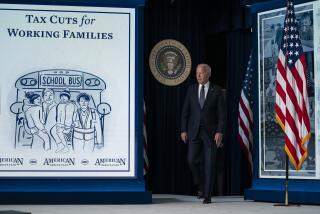Kerry’s College Plan Fails Poor Kids
John Kerry wants to help poor students go to college by giving them more financial aid. Although providing a greater number of low-income students with access to higher education is a worthy goal, Kerry’s plan doesn’t address the real problems that keep them out of the running for the advantages afforded by a four-year college degree.
Kerry claims his plan would help poor kids, but it’s really just a big, new middle-class entitlement. He wants to provide a tax credit that would allow families paying college tuition to take up to $4,000 a year off their taxes. Kerry would make the tax credit “refundable,” meaning that if your total tax payment was less than $4,000, as it is for many poor families, the IRS would send you a check for the balance of the tax credit. That way poor families would get the whole college subsidy even if it was more than they owed in taxes.
The problem is that this does nothing to remove the real barriers that prevent poor kids from attending college. The main problem isn’t money. Kerry could jack up his tax credit to $40,000 a year and it wouldn’t increase the number of low-income students who attend college by more than a tiny fraction.
Remember that a kid needs a lot more than money to go to college. He needs to meet a set of minimum academic standards that are required by virtually all four-year colleges before they will even look at his application.
Just about every student who meets these academic standards already goes to college, regardless of income level. That’s because financial aid and other policies have already expanded college access to the point where even poor kids are able to enroll if they qualify academically. The kids who don’t meet these standards couldn’t go to college no matter how much money you gave them.
Here are the numbers: In 2000 there were about 4 million people who were 18 years old. Of those, 30% dropped out of high school, leaving about 2.8 million who graduated with regular diplomas. Of those 2.8 million kids, only about half took the minimal academic coursework -- math, English, science and so on -- that almost all colleges require for admission. And of the 1.4 million who passed that hurdle, about 100,000 still couldn’t read English at even a bare-minimum level. That leaves only about 1.3 million kids, a mere 32% of the 18-year-old population, who were minimally qualified to apply to college.
According to the U.S. Department of Education there were 1,341,000 incoming freshmen at four-year colleges that year. That’s almost exactly the number of college-ready graduates in 2000.
There just isn’t any substantial population of kids, poor or otherwise, who are academically qualified to attend college but don’t go because they can’t afford to. Kerry’s tax plan would subsidize tuition only for those who were going to go to college anyway. That means mostly the middle class, not the poor.
The real reason so few poor students go on to college is that they disproportionately attend schools that don’t prepare them academically. Middle-class students, on the other hand, go to suburban schools that give them the skills they need to enter higher education. We cannot hope to increase access to college for low-income children until we fix their schools.
There’s no doubt that paying for college is very difficult. If Kerry wants to use the tax code to help families struggling with college tuition, fine. But voters shouldn’t be fooled into thinking this program would put more poor kids on the four-year college rolls. The only thing that will provide the poor with greater access to college is structural reform of the education system. Given that Kerry is relying heavily on teachers unions for donations and campaign volunteers, he’s unlikely to endorse that.
More to Read
Sign up for Essential California
The most important California stories and recommendations in your inbox every morning.
You may occasionally receive promotional content from the Los Angeles Times.










